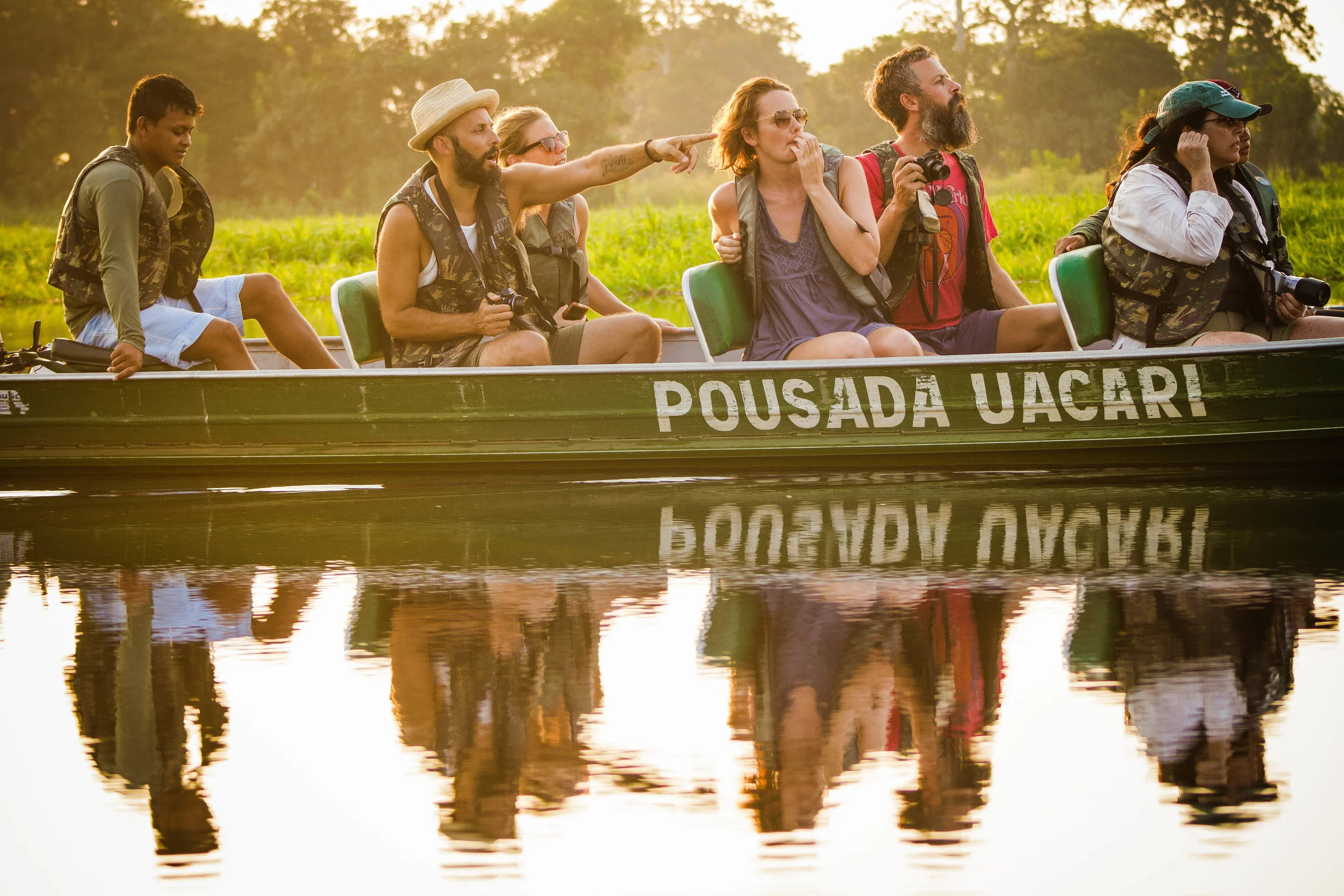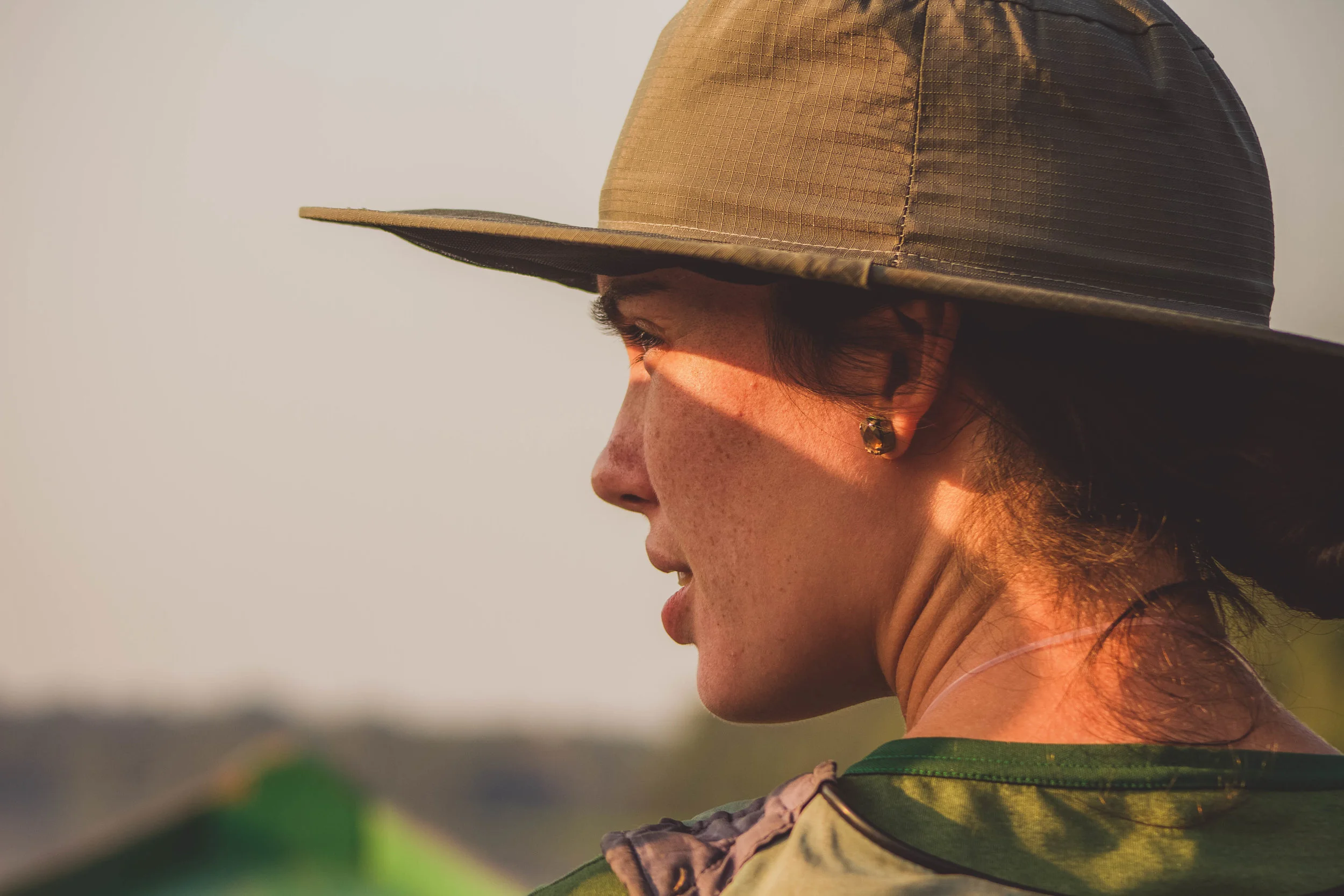The Amazon rainforest has always excited me. In 2008 I visited the Manu reserve on the Peruvian side of the Amazon, known predominantly for its Macaws and clay lick habitats, and it gave me such a buzz that I didn't stop thinking or talking about it at any available opportunity for years to come. I knew I would be back. In fact, at the time I remember being pretty certain I would retrain as a biologist and move there. Of course, that didn't happen. As soon as the idea of a trip to Brazil was born in my mind, I was determined to go back to experience the rainforest on the Brazilian side.
After a little research I stumbled across the website for the Uacari Floating Jungle Lodge, an eco lodge positioned in a bend of the Japurá River in the Amazon basin. Unlike many of the lodges in the Amazon, Pousada Uacari is floating, meaning that it rises and falls with the dramatically changing water levels that are characteristic of the region. Situated within the Mamirauá Sustainable Development Reserve, parts of the forest around Pousada Uacari are flooded seasonally. Water levels here can rise and fall 10-12m over the course of the year, creating one of the Amazons most unique eco-systems that plays host to an astonishing array of wildlife. During my visit in January, water levels were low and it was stunning to see the marks left by the river only a few months previously on the trees towering above us.
In order to reach Pousada Uacari, visitors pass through Tefé (by ferry or plane from Manaus), where they are met and transferred to the lodge by boat, a journey that takes about an hour. The lodge itself consists of 5 floating cabins each with two bedrooms and bathrooms as well as a large communal dining space, which also hosts a research station upstairs. Staying in one such floating hut has some serious perks, such as swinging in a hammock during the heat of the day whilst caiman nonchalantly swim past in search of lunch. There aren't many creature comforts in these cabins, with the exception of a tiny daily allocation of electricity which is wisely spent on a fan over the bed in the evening and a flushing toilet, but there are no complaints. As night draws in the reserve falls into complete darkness, with just the light of the stars above and the hum of the nocturnal residents in the surrounding forest.
During my stay, the research station played host to staff from the Jaguar Conservation Alliance who enthusiastically recounted tales over breakfast from their nightly excursions in search of Jaguars. The Mamirauá reserve has one of the highest densities of Jaguars in the world, making it a unique location for experts in the field. The lodge now runs expeditions specifically focused on spotting these fantastic big cats, but these tours only run when the river is high when the animals are forced off the ground to hunt into the trees, thus making them easier to spot. In line with the ethos of the lodge, the profit made from these expeditions is used to fund the scientific research taking place on site.
The variety of wildlife that I saw at Pousada Uacari was phenomenal, ranging from the beautiful Amazonian kingfisher to sleepy looking sloths and from enormous pirarucu fish to river dolphins. The lodge is named after one of the areas endemic species, the white Uacari monkey which we were lucky enough to spot on our last day of exploring the region. With white fur and an angry-looking red face this monkey is also referred to as the English monkey, due to its visual comparison to a white man that has been in the Brazilian sun too long! The success of our excursions was entirely down to the sharp eye of the guides (both those from the local community and further afield) who were extraordinarily knowledgeable and generous with their time. Throughout my stay I got the overwhelming impression that every member of staff was fully committed to the success of the lodge, which is managed in joint partnership between the Mamirauá Institute and the ten communities that live within the reserve, who work as managers, guides, contractors and salespeople.
Needless to say, this was a once-in-a-lifetime trip. Once again I got home from the Amazon planning to return for an extended period, albeit this time with my anthropologists hat on.




